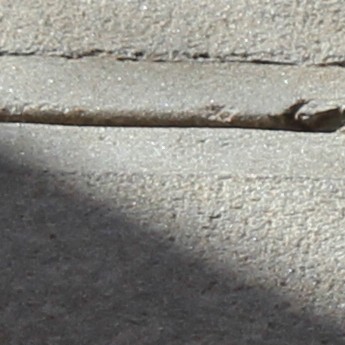Continuing the thread on cinema and violence started last week, next I am focusing on how violence is figured, represented and thought in/by Tarantino’s Kill Bill.
Some violent scenes in Kill Bill most evidently express that the hyper-stylization they undertake is precisely to deprive them of any lasting or meaningful capacity to shock. The two most eloquent are the sequence in which O-Ren Ishii (Lucy Liu)’s parents are savagely murdered while she, still a child, hides underneath the bed in which her mother is stabbed numerous time until the blade finally pierces the bed to land inches beside O-Ren Ishii’s head. As the story suggests, the gruesome experience gives birth to the assassin O-Ren Oshii, who soon enough gets her unequivocal revenge by lashing the blade that tears apart the body of the man who killed her mother and ordered the execution of her father.
These lengthy sequence of almost five minutes is animated, and the presence of blood here is considerably more voluminous and seems to be have adopted the ability to leap unimagined surreal heights. The inclusion of animation interrupts further the flow of the film, whose structure is already fragmented into chapters that carry a descriptive title. Tarantino slashes through linearity in the same way as his characters fictionally slash human bodies and things. It is precisely the animation that encapsulates what otherwise would be extremely unbearable scenes, aesthetically and morally, into the possibility of cinematic consumption. It is not an easy sequence by any means, but the animated action stamps it as fiction in very specific terms by which any possibility for transformative shock also gets irrecoverably diminished.
The animated-action demands that the violence be consumed, perceived, understood even, within the parameters of (melo)dramatic, emotive if not almost sentimental, and consequently tamed or domesticated fiction. As Tarantino’s stylization of violence heightens in such scenes and challenges the formal grounds that his previous films had achieved, any potential for shock, let alone moral outrage or deviance, plummets. In other words, just as his films build upon other cinematic traditions to offer inter-filmic works, his own filmography continues to set the signposts for how later films should or can be viewed, read, and even critiqued.
The other sequence of unbridled violence is when The Bride, played by Uma Thurman, goes to Japan to duel with O-Ren Ishii. To do so, Thurman’s character needs to battle with O-Ren Oshii’s modest battalion of furiously armed guards, who, one by one or in a bunch succumb to The Bride’s prodigious sword. Proven invincible, The Bride reaches the final target, O-Ren Ishii, and kills her in a sequence that dramatically changes pace, rhythm, and overall cinematic tone. Privileging long shots, the camera gaze of the duel sequence grows increasingly more static.
The final encounter between The Bride and O-Ren Ishii looks like a serene succession of beautiful paintings. Not unlike the earlier infinitely more frantic shots, these last ones, bathed predominantly in tones of blue, are also carefully constructed. In the first multiple-fight sequence, the camera hardly stays still. The film cuts sometimes gracefully, sometimes choppily to capture all the rapid movements transpiring in front of it. Shots from multiple angles shift places to capture the full magnitude of the fight.
Our eyes may not be able to account precisely for how the fights unfold, but The Bride’s blade strikes down every contender that meets her march: the ground, staircase, narrow pole, and even while taking a high and long leap on the air. Not one corner of the large hall is left untouched by the victims’ blood or covered by their limbs. It is so much, so increasingly over-the-top, that it is undoubtedly absurd. By the end of the mega fight scene, all of O-Ren Ishii’s mob soldiers have lost at least one extremity. They and their severed parts lie scattered in a thick mass of blood.
The exaggeration, undoubtedly, compounds the parodic, if not altogether farcical, under and overtones of the shots. The sequence, it must be said, asks to be taken at once skeptically and seriously. Serious entertainment; dubious drama. Another element that contributes to the farcical sequence of the sheer violence is editing. The sequence is undoubtedly a few minutes too long. The length is accentuated by the countless number of bodies that fall in dramatic quick succession.
The repetition of these bodies neatly uniformed helps to strip them of any individuading trait. Far from being individuals or even the mere shadow of ones, they are killing and dying automata uniformly dressed in white shirts and black suits. Even though the sequence is not animated as the earlier sequence in the movie depicted above, the governing tone of the sequence is one of pretense in which the meticulous choreography of the fights dominates the spotlight of the scenes.
The repetition predicated on the uncomfortably extended length of the sequence once again compounds the farcical composition of the sequence. If repetition sometimes operates to accentuate the subtle or metaphysical difference between one and another, in this sequence, conversely, repetition works to elongate the oppressive accumulation of the same. The repetition cues the audience to keep up, perception-wise, with the fast, thoroughly rhythmic configuration of the sequence while also accepting that there is no need to deem it too seriously.
Despite the vibrant color of the ubiquitous blood as well as the agility of the martial bodies, the repetition structuring the shots and scenes denies the sequence of gruesome violence, any real urgency. The sequence proves just as realist as the earlier animated part in which O-Ren Ishii becomes an orphan.
